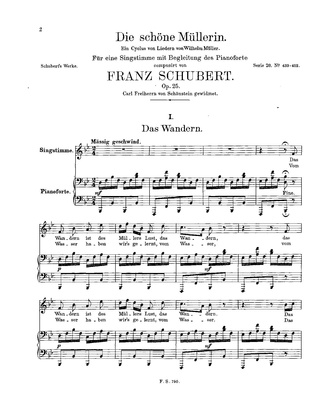Related Research Articles

A refrain is the line or lines that are repeated in music or in poetry — the "chorus" of a song. Poetic fixed forms that feature refrains include the villanelle, the virelay, and the sestina.

Strophic form – also called verse-repeating form, chorus form, AAA song form, or one-part song form – is a song structure in which all verses or stanzas of the text are sung to the same music. Contrasting song forms include through-composed, with new music written for every stanza, and ternary form, with a contrasting central section.

"She Loves You" is a song by the English rock band the Beatles, written by John Lennon and Paul McCartney and released as a single in the United Kingdom on 23 August 1963. The single set and surpassed several sales records in the United Kingdom charts, and set a record in the United States as one of the five Beatles songs that held the top five positions in the charts simultaneously, on 4 April 1964. It remains the band's best-selling single in the UK and was the top-selling single of the 1960s there by any artist.

The 32-bar form, also known as the AABA song form, American popular song form and the ballad form, is a song structure commonly found in Tin Pan Alley songs and other American popular music, especially in the first half of the 20th century.
Song structure is the arrangement of a song, and is a part of the songwriting process. It is typically sectional, which uses repeating forms in songs. Common forms include bar form, 32-bar form, verse–chorus form, ternary form, strophic form, and the 12-bar blues. Popular music songs traditionally use the same music for each verse or stanza of lyrics. Pop and traditional forms can be used even with songs that have structural differences in melodies. The most common format in modern popular music is introduction (intro), verse, pre-chorus, chorus, verse, pre-chorus, chorus, bridge, and chorus. In rock music styles, notably heavy metal music, there is usually one or more guitar solos in the song, often found after the middle chorus part. In pop music, there may be a guitar solo, or a solo performed with another instrument such as a synthesizer or a saxophone.
Verse–chorus form is a musical form going back to the 1840s, in such songs as "Oh! Susanna", "The Daring Young Man on the Flying Trapeze", and many others. It became passé in the early 1900s, with advent of the AABA form in the Tin Pan Alley days. It became commonly used in blues and rock and roll in the 1950s, and predominant in rock music since the 1960s. In contrast to 32-bar form, which is focused on the refrain, in verse–chorus form the chorus is highlighted.
In music, especially Western popular music, a bridge is a contrasting section that prepares for the return of the original material section. In a piece in which the original material or melody is referred to as the "A" section, the bridge may be the third eight-bar phrase in a 32-bar form, or may be used more loosely in verse-chorus form, or, in a compound AABA form, used as a contrast to a full AABA section.

"Dead Presidents" is a 1996 song by American rapper Jay-Z. It was released as the first promotional single for Jay-Z's debut album Reasonable Doubt, though it did not directly appear on the album: a different version of the song with the same backing track and chorus but with different lyrics called "Dead Presidents II" appeared on Reasonable Doubt. "Dead Presidents II" was voted number 16 in About.com's Top 100 Rap Songs and number 42 in Rolling Stone's Top 50 Jay-Z Songs.
"Close to the Edge" is a song by the English progressive rock band Yes, featured on their fifth studio album Close to the Edge (1972). The song is over 18 minutes in length and takes up the entire first side of the album. It consists of four movements.

"Umbrella" is a song by Barbadian singer Rihanna, released worldwide on March 29, 2007, through Def Jam Recordings as the lead single and opening track from her third studio album, Good Girl Gone Bad (2007). Its featured artist, American rapper Jay-Z, co-wrote the song with its producers Tricky Stewart and Kuk Harrell, with additional writing contributions coming from The-Dream.
"Burlington Bertie" is a music hall song composed by Harry B. Norris in 1900 and notably sung by Vesta Tilley. It concerns an aristocratic young idler who pursues a life of leisure in the West End of London. Burlington is an upmarket London shopping arcade associated with luxury goods.
"Send It to Me" is a song by English rock and roll band the Rolling Stones featured on the 1980 album Emotional Rescue.
Non-lexical vocables, which may be mixed with meaningful text, are a form of nonsense syllable used in a wide variety of music. Common English examples are "la la la", "na na na" and "da da da".

"Disturbia" is a song recorded by Barbadian singer Rihanna for Good Girl Gone Bad: Reloaded (2008), a re-release of her third studio album Good Girl Gone Bad (2007). It was written by Andre Merritt, Chris Brown, Brian Kennedy and Rob. A!, with the production of the song helmed by Kennedy. The song was released as the third single from the reloaded edition of the album, and seventh overall. "Disturbia" was sent to US contemporary hit radio on June 17, 2008, and was released as a CD single in the United Kingdom on July 22, 2008.

"Ever Fallen in Love (With Someone You Shouldn't've)" is a 1978 song written by Pete Shelley and performed by his group Buzzcocks. It was a number 12 hit on the UK Singles Chart and was included on the album Love Bites.
Catchiness is how easy it is for a song, tune, or phrase to be recalled. It is often taken into account when writing songs, catchphrases, advertising slogans, jingles etc. Alternatively, it can be defined as how difficult it is for one to forget it. Songs that embody high levels of remembrance or catchiness are literally known as "catchy songs" or "earworms". While it is hard to scientifically explain what makes a song catchy, there are many documented techniques that recur throughout catchy music, such as repetition, hooks and alliteration. Selling Sounds: The Commercial Revolution in American Music says that "although there was no definition for what made a song catchy, all the songwriting guides agreed that simplicity and familiarity were vital".
"Oh Johnny, Oh Johnny, Oh!" is a popular American song composed by Abe Olman (1887–1984), lyricized by Ed Rose, and published by Forster Music Publisher, Inc. The music was copyrighted 7 February 1917 and the copyright was renewed 29 December 1944. Under the Copyright Term Extension Act (1998), the sheet music is in the public domain, as is all music published in the U.S. prior to 1923. Its melody and structure form the basis of a self-calling circle dance, using square dance steps and popular in summer camps.

"Heart Attack" is the second English single from Enrique Iglesias' tenth studio album, Sex and Love. The song was produced by The Cataracs, who also produced the album's first single "Turn the Night Up", and was written by Iglesias, Niles Dhar, Marty James and Rome Ramirez. The song had its radio premiere on 17 September 2013 and officially impacted contemporary hit radio in the U.S. on 1 October 2013. It was made available for purchase as a digital download in North America on 8 October 2013.
"Talk to Me" is a song by American rapper Drakeo the Ruler featuring Canadian rapper Drake. It was released on February 23, 2021, as the lead single from the former's ninth mixtape The Truth Hurts (2021). The song was produced by EY and Elias Knight.

"Jetski" is a single by American record label Internet Money and American rappers Lil Mosey and Lil Tecca. The song was released on March 26, 2021, and features "glossy" production by Nick Mira. It marks the first official collaboration between the artists, as well as signalling the end of an ongoing feud between Mosey and Tecca, which dated back to 2019. The song was released as Internet Money's first single of 2021. Although failing to chart on the US Billboard Hot 100, it managed to peak at number 19 on the US Bubbling Under the Hot 100 and number 88 on the Canadian Hot 100, going on to be Mosey's most successful release post "Blueberry Faygo", his 2020 hit single.
References
- 1 2 Sloan, Nate; Harding, Charlie (2019). Switched on Pop: How Popular Music Works, and Why It Matters . Oxford University Press. p. 51. ISBN 9780190056674.
- 1 2 3 4 5 6 Peres, Asaf (2018-07-31). "Everything You Need to Know About the Postchorus". Top40 Theory.
- ↑ Zeger, Eli (2016-08-17). "The Post-Chorus, And It's [sic] Unsung Place In Pop Music". Vinyl Me, Please. Archived from the original on Sep 21, 2021.
- 1 2 3 4 Blume, Jason (2018-04-02). "The Power of Post-Choruses". Broadcast Music, Inc. Archived from the original on Feb 5, 2024.
- 1 2 Keys, Scarlet (2018). The Craft of Songwriting: Music, Meaning, & Emotion. Berklee Press. p. 109. ISBN 9781540039965.
- ↑ von Appen & Frei-Hauenschild 2015, p. 79.
- ↑ Platon, Adelle (2017-04-28). "The-Dream on Penning Rihanna's 'Umbrella' Hook: 'It Just Never Stopped Pouring, Metaphor After Metaphor'". Billboard .
- von Appen, Ralf; Frei-Hauenschild, Markus (2015), Ralf von Appen; André Doehring; Thomas Phleps (eds.), "AABA, Refrain, Chorus, Bridge, Prechorus — Song Forms and their Historical Development" (PDF), Samples, Online Publikationen der Gesellschaft für Popularmusikforschung/German Society for Popular Music Studies e.V., 13